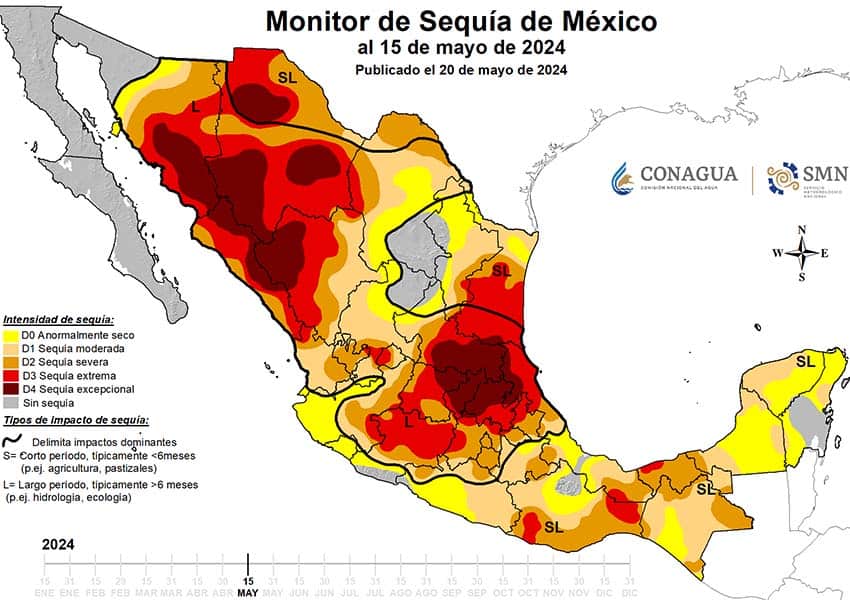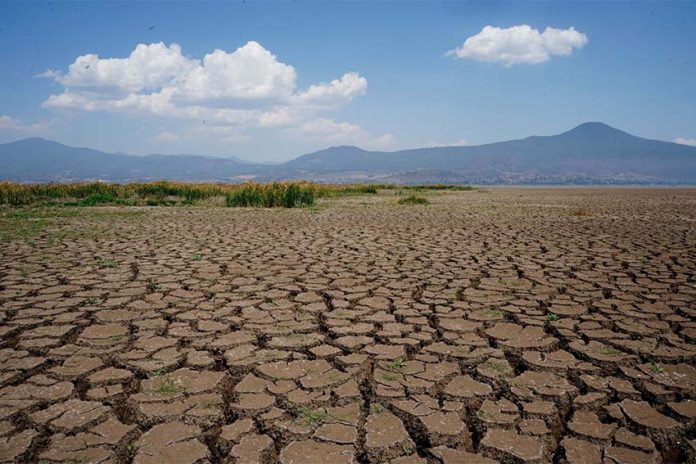As much of Mexico experiences high temperatures this week with the third heat wave of the season, the latest national drought monitor report published by Conagua (National Water Commission) on Monday shows that drought also continues to increase nationwide.
Some level of drought was affecting 70.76% of the territory in Mexico through May 15, with different locations falling somewhere on Conagua’s range of “moderate” to “exceptional” drought conditions.

That’s up nearly 7% from the agency’s April 15 report.
The cyclical El Niño climate pattern, which began last June, features warming conditions in the eastern Pacific Ocean and has been blamed for high temperatures and dry conditions in Mexico. This week, the National Meteorological Service (SMN) warned that in some states, temperatures would be in excess of 45 degrees Celsius.
The agency has also forecast two additional heat waves to come over the next month.
Forecasters predict a strong La Niña phenomenon — characterized by strong winds pushing warmer Pacific waters west and bringing cooler temperatures to Mexico’s Pacific coast — will follow as El Niño concludes, and should bring heavy rains to western Mexico this summer. Additionally, meteorologists predict an active hurricane season in the Atlantic and Gulf of Mexico.

Even though rain is forecast over the next 7–10 days in many parts of the country, total precipitation for May will be below normal; that’s particularly bad news for the 51% of Mexico which is experiencing severe, extreme or exceptional drought — Mexico’s three worst drought ratings.
Mexico City finds itself in the severe drought category, and Conagua’s latest report indicates that the Cutzamala water system — the transfer system which supplies roughly 25% of Mexico City’s water — is operating at historically low levels (at 29.8% capacity).
It is the first time Cutzamala has ever been recorded at below 30% capacity.
Three of the reservoirs that make up the Cutzamala system are at alarmingly low levels. The El Bosque reservoir in Michoacán is at 38.1% of capacity, the Villa Victoria reservoir in México state is at 25.5% and the Valle de Bravo reservoir is at 27.5%.
The water scarcity has prompted federal, Mexico City and México state water authorities to reduce the flow into the Mexico City metro area to 8 cubic meters per second. Water supply has been restricted several times in recent years, steadily being reduced from 14.8 cubic meters per second in June 2022 — a rate that had been sustained for at least the previous seven years, according to a report authored by Conagua and the World Bank.
News outlet ADN 40 reported that “day zero” for the Cutzamala water system — when water would run out unless rains refill the reservoirs — would have been as soon as June 26, had the flow not been reduced.
ADN 40 also reported that the Cutzamala system requires the equivalent of 488 days of rain to restore its reservoirs to an acceptable level.
According to the national weather agency, last year’s rainfall was 32% below the historical average.
